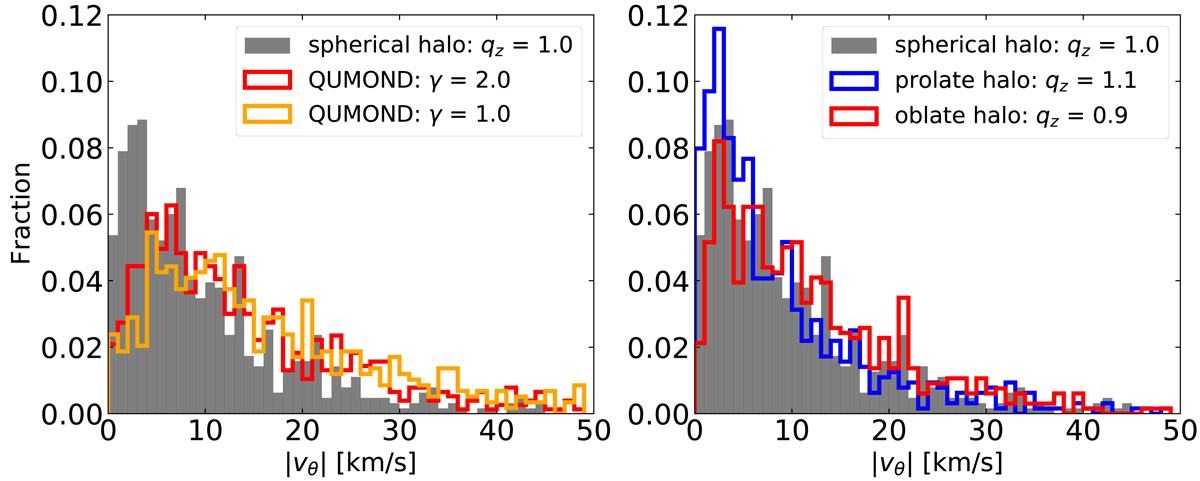Fig. 13.

Download original image
Distributions of the latitudinal component of the velocity, |vθ|, in Newtonian gravity and in QUMOND for 4 M⊙ HVSs. Left panel: distributions of |vθ| for different models of the Galactic potential: Newtonian gravity with a spherical dark matter halo (gray shaded histogram) and QUMOND with γ = 1 (orange histogram) and γ = 2 (red histogram). As the gravitational pull of the baryonic disk is enhanced in QUMOND, the fraction of HVSs with high |vθ| is larger than in Newtonian gravity with a spherical halo. Right panel: distributions of |vθ| for three different shapes of the dark matter halo in Newtonian gravity. The three halos have qy = 1 but different qz: a spherical halo with qz = 1 (gray shaded histogram), a prolate halo with qz = 1.1 (blue histogram), and an oblate halo with qz = 0.9 (red histogram). An oblate halo enhances the gravitational pull of the baryonic disk, as shown by the larger fraction of HVSs with high |vθ| and the smaller fraction of HVSs with low |vθ| (compare the shaded and red histograms). The opposite occurs with a prolate halo (compare the shaded and blue histograms).
Current usage metrics show cumulative count of Article Views (full-text article views including HTML views, PDF and ePub downloads, according to the available data) and Abstracts Views on Vision4Press platform.
Data correspond to usage on the plateform after 2015. The current usage metrics is available 48-96 hours after online publication and is updated daily on week days.
Initial download of the metrics may take a while.


